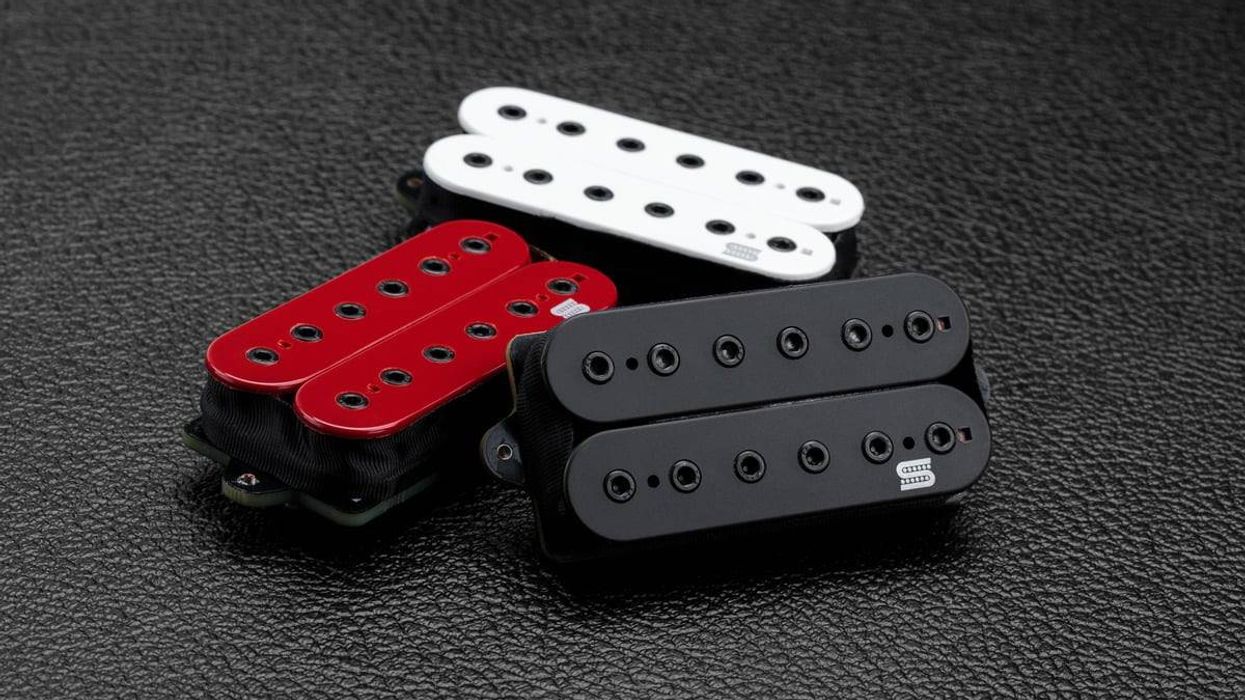The term “convergence” is a popular buzzword
in the media and telecommunication
sectors these days, but I think it is an important
concept that can apply to how we, as guitarists,
approach change and technology. In its
broadest sense, the word simply defines the
meeting point of two things, be they physical
or philosophical. For our purposes these two
things are guitars and digital technology.
Now, I know some of you will be tempted
to stop reading right here, but please resist
the urge. For some, the mere mention of the
words “digital” and “guitar” in the same sentence
is seen as sacrilege. This sentiment isn’t
entirely unfounded. Those of us who were
around to see and hear the earliest iterations
of digital recording technology know that
there was a lot to dislike. The crunchy, warbly,
artifact-filled, 8-bit birth of digital recording
could be a horrible-sounding thing, and some
of the ways in which companies have tried to
combine analog and digital concepts have
been downright disturbing. But we’ve come a
long way since then.
Over the years, companies have spent millions
of development dollars in the pursuit of
digital tone. Whether you call it “emulation”
or “modeling,” the goal and focus of these
efforts has been to digitally recreate the
characteristics and tone of existing analog
technologies, namely amplifiers and effects
pedals. The objective has been to achieve
something that sounds just as good, but not
necessarily better. (Peavey’s ReValver is a
notable exception, as it allows you to replace
and design your own virtual circuitry. To really
take full advantage of its capabilities, however,
one needs at least an associate’s degree
in electrical engineering.)
Are there advantages to software-based
amps? Certainly. They’re much lighter and
arguably more flexible than their physical
counterparts. They don’t break down and
they always sound exactly the same, regardless
of age. Modeling is a worthwhile endeavor,
but it isn’t the type of digital convergence
that excites me as a musician. No, when I sit
down to play I’m more interested in creating
something new, something that’s never been
heard before, and yet something that is also,
at its core, still familiar and retains all the
elements of my guitar that I like. One of the
best examples I’ve found of this vision is the
Fishman Aura system.
Since its inception, Fishman has been dedicated
to the pursuit of amplifying acoustic
instruments as accurately as possible. My
favorite acoustic “baby,” a 1985 Alvarez Yairi
DY-45, has a Fishman piezo system installed.
While it is better than the soundhole pickup
that preceded it, it’s still a far cry from what I
hear when I sit down to strum unplugged. If
you have a traditional acoustic pickup you’re
probably very familiar with the feeling: When
you record using the pickup and then listen
to the track, you hear a guitar but it isn’t
necessarily your guitar. Being somewhat of an
acoustic purist, I was admittedly quite skeptical
when I first heard of the Fishman Aura
system. My fear was that it would be another
digital failure. But once I had the chance to
put it to use in my own studio I realized that I
couldn’t have been more wrong.
The system works by recording a wide variety
of guitars with several mics and capturing
“images” of each guitar. This information is
loaded into a pedal and used to process the
output from your guitar’s pickup. When I listened
to the playback of my tests, I heard my
guitar as I’d never heard it before. The direct
signal from my piezo pickup always sounded
brittle and crispy to me, but I liked the underlying
clarity. The Aura-processed signal captured
the snap and attack of the piezo, but also
contained the full-bodied warmth and richness
that I’d thus far been unable to capture without
hours of trial-and-error mic placement.
So, in a completely pure sense, was it my guitar?
Yes and no. There wasn’t an exact preset
match for my particular model, so I had to
choose something similar. (Fishman does
offer a service that will image your personal
guitar.) At the end of the day, the only thing
that mattered was that it sounded amazing
and the result was something that would
never have been possible had I not been willing
to give a new digital concept a chance.
This is the type of convergence that relights
the spark that got me into playing and
recording my guitar in the first place. Is it
a complete replacement for a $5000 guitar,
mic’d with any number of high quality
microphones in a perfectly treated acoustic
environment? No, of course not. But it isn’t
intended to be. It is a new meeting point
along the analog and digital paths, something
that is both pure and synthetic, and
also completely pleasing.
Ultimately, you don’t have to sacrifice the
things you love about your analog guitar
tone in order to embrace or befriend digital
technology. “Digital” doesn’t have to be a
dirty word. You can be an acoustic guitarist
and plug into a digital device and not betray
your core values. There is a happy medium—
a convergence—of digital and analog. If you
let go of your preconceived notions and past
negative experiences, and open yourself to a
little bit of experimentation, you too can discover
a voice of your instrument that you’ve
never heard before.
Alan Carter
Alan Carter is a sales engineer at Sweetwater Sound, a life-long musician, and the proud father of one beautiful daughter. He is also the bassist for the Tim Harrington Band (www.Tim-Harrington-Band.com). He can be reached at Alan_Carter@Sweetwater.com.























